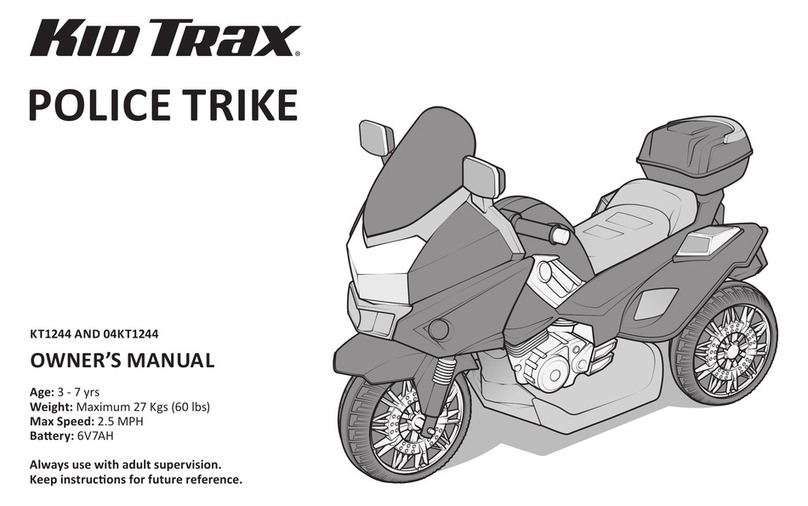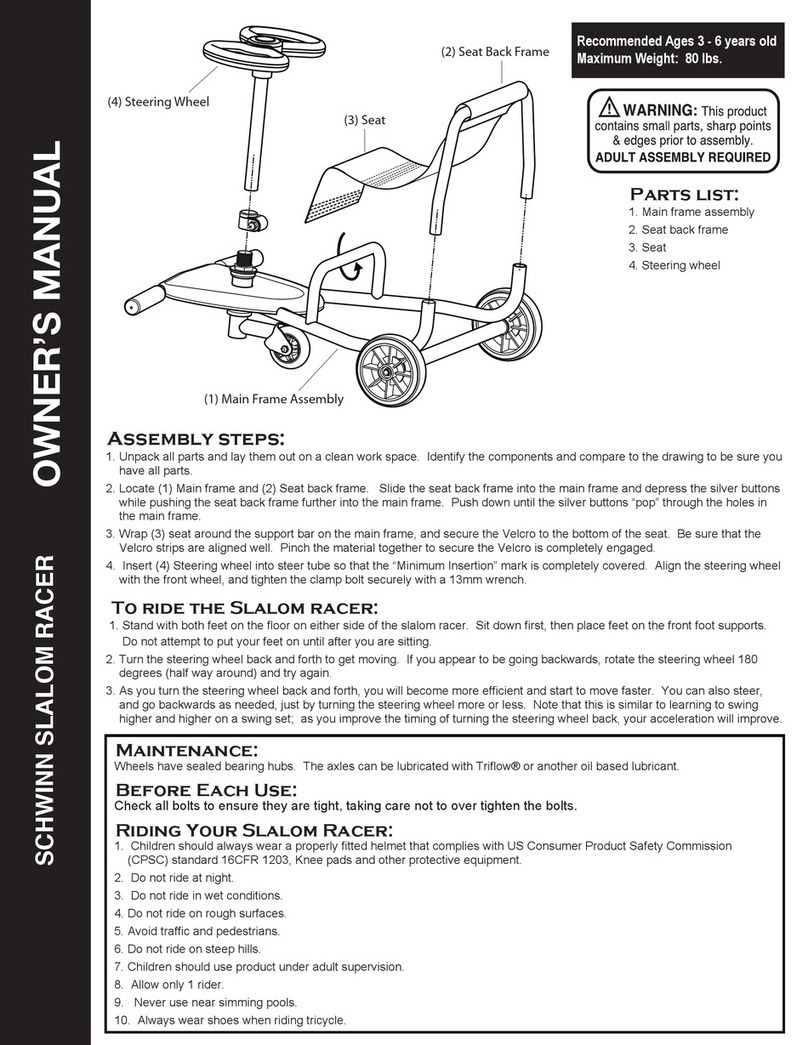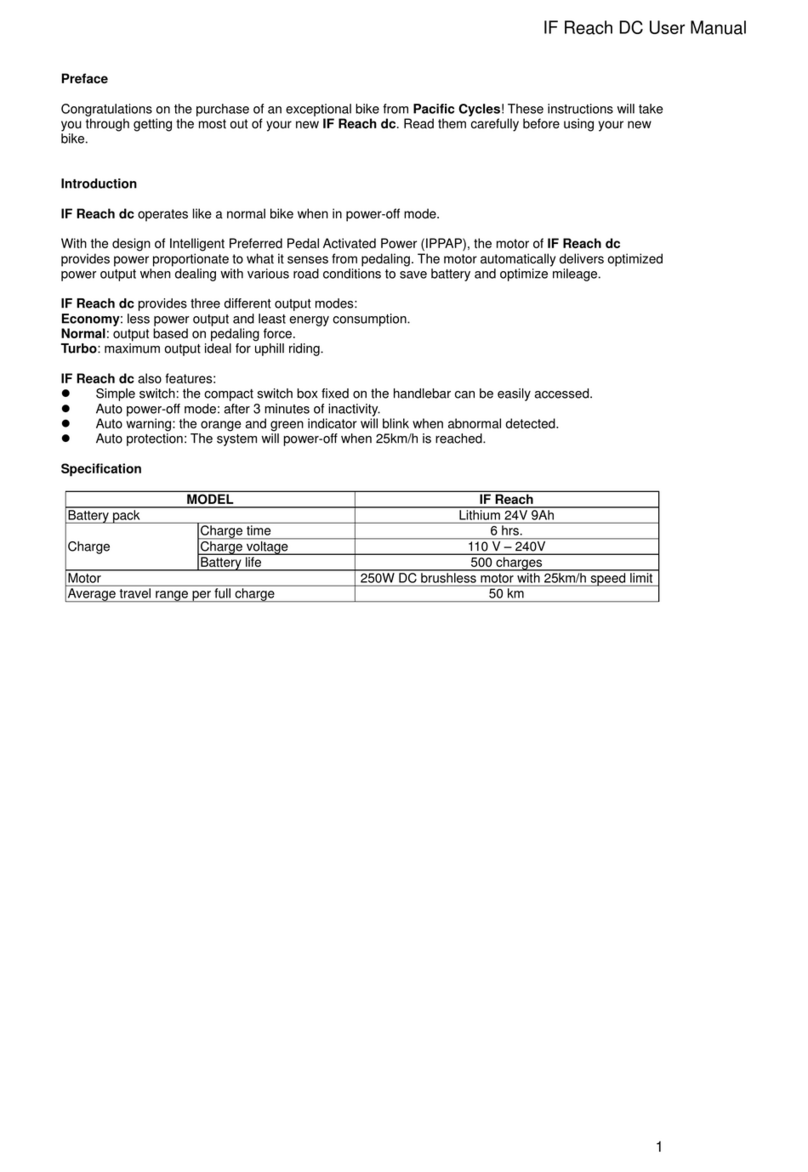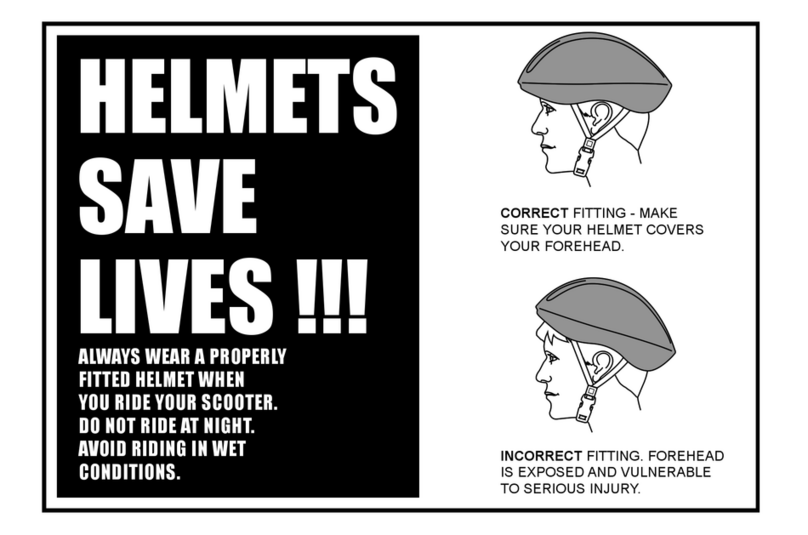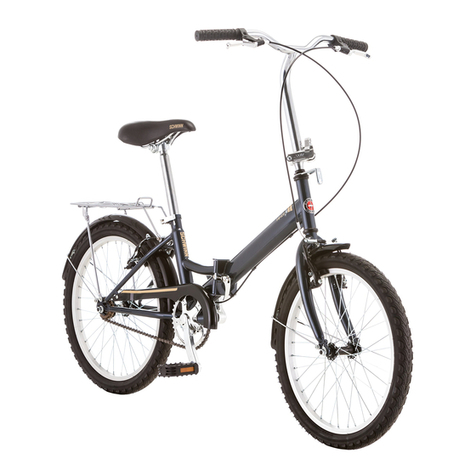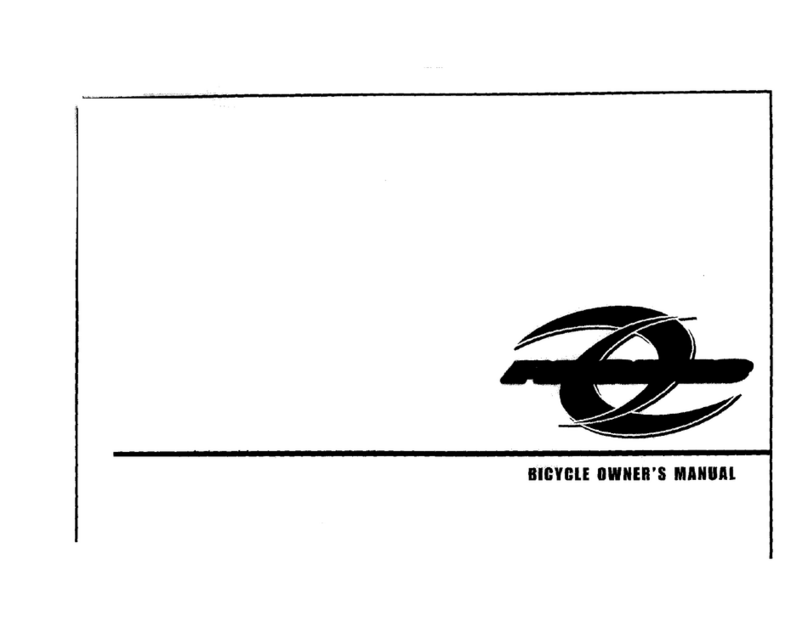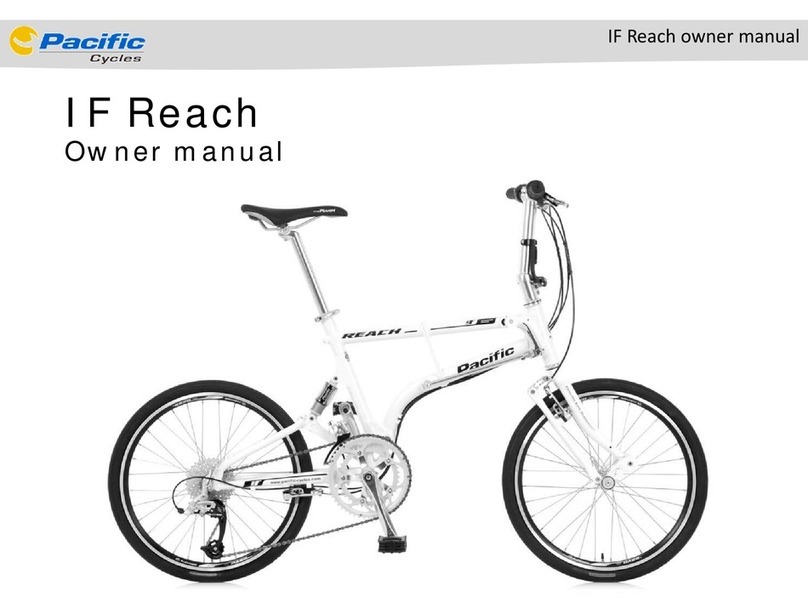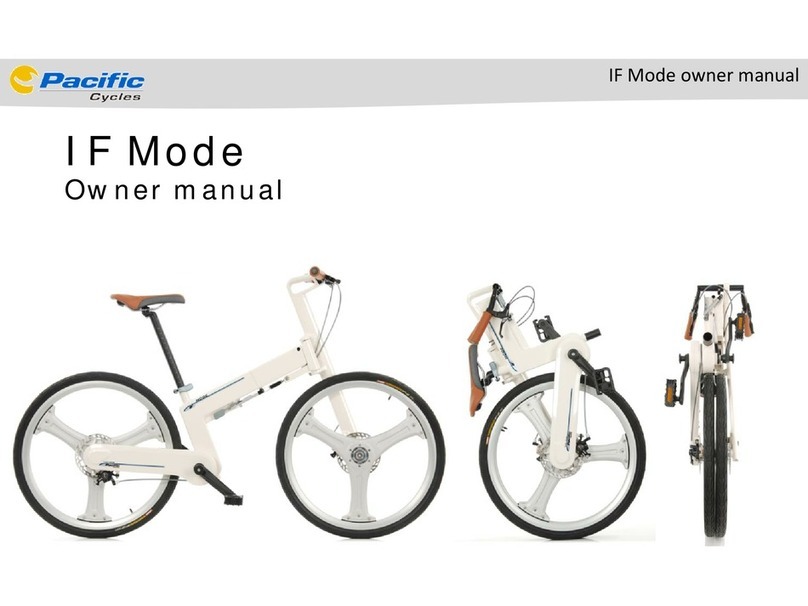4
• Always ride defensively in a predictable, straight line.
Never ride against trafc.
• Concentrate on the path ahead. Avoid pot holes,
gravel, wet road markings, oil, curbs, speed bumps,
drain grates and other obstacles.
• Cross train tracks at a 90 degree angle or walk your
bicycle across.
• Expect the unexpected (e.g. opening car doors or
cars backing out of concealed driveways).
• Take extra care at intersections and when preparing
to pass other vehicles.
• Maintain a comfortable stopping distance from all
other riders, vehicles and objects. Safe braking
distances and forces are subject to the prevailing
weather conditions. Do not lock up the brakes.
When braking, always apply the rear brake rst, then
the front. The front brake is more powerful and if it is
not correctly applied, you may lose control and fall.
• Always use the correct hand signals to indicate
turning or stopping.
• Obey the trafc laws (e.g. stopping at a red light or
stop sign, giving way to pedestrians).
• Wear proper riding attire, reective if possible, and
avoid open toe shoes.
• Avoid wearing loose pants. If you are wearing
loose pants, tuck the pant leg into a sock or use
leg clips/elastic bands to prevent them from being
caught in the drive chain.
• Do not use items that may restrict your hearing
and vision.
• Don’t carry packages or passengers that
will interfere with your visibility or control of
the bicycle.
Wet Weather
• Be aware of road conditions. Pot holes and
slippery surfaces such as line markings and train
tracks all become more hazardous when wet.
• Decrease your riding speed, avoid sudden braking
and sharp turns.
• Braking will require additional distance. Initiate
braking slowly and earlier than usual.
• Wear reective clothing and use safety lights for
increased visibility.
